Purdue Online Writing Lab College of Liberal Arts

Writing a Literature Review

Welcome to the Purdue OWL
This page is brought to you by the OWL at Purdue University. When printing this page, you must include the entire legal notice.
Copyright ©1995-2018 by The Writing Lab & The OWL at Purdue and Purdue University. All rights reserved. This material may not be published, reproduced, broadcast, rewritten, or redistributed without permission. Use of this site constitutes acceptance of our terms and conditions of fair use.
A literature review is a document or section of a document that collects key sources on a topic and discusses those sources in conversation with each other (also called synthesis ). The lit review is an important genre in many disciplines, not just literature (i.e., the study of works of literature such as novels and plays). When we say “literature review” or refer to “the literature,” we are talking about the research ( scholarship ) in a given field. You will often see the terms “the research,” “the scholarship,” and “the literature” used mostly interchangeably.
Where, when, and why would I write a lit review?
There are a number of different situations where you might write a literature review, each with slightly different expectations; different disciplines, too, have field-specific expectations for what a literature review is and does. For instance, in the humanities, authors might include more overt argumentation and interpretation of source material in their literature reviews, whereas in the sciences, authors are more likely to report study designs and results in their literature reviews; these differences reflect these disciplines’ purposes and conventions in scholarship. You should always look at examples from your own discipline and talk to professors or mentors in your field to be sure you understand your discipline’s conventions, for literature reviews as well as for any other genre.
A literature review can be a part of a research paper or scholarly article, usually falling after the introduction and before the research methods sections. In these cases, the lit review just needs to cover scholarship that is important to the issue you are writing about; sometimes it will also cover key sources that informed your research methodology.
Lit reviews can also be standalone pieces, either as assignments in a class or as publications. In a class, a lit review may be assigned to help students familiarize themselves with a topic and with scholarship in their field, get an idea of the other researchers working on the topic they’re interested in, find gaps in existing research in order to propose new projects, and/or develop a theoretical framework and methodology for later research. As a publication, a lit review usually is meant to help make other scholars’ lives easier by collecting and summarizing, synthesizing, and analyzing existing research on a topic. This can be especially helpful for students or scholars getting into a new research area, or for directing an entire community of scholars toward questions that have not yet been answered.
What are the parts of a lit review?
Most lit reviews use a basic introduction-body-conclusion structure; if your lit review is part of a larger paper, the introduction and conclusion pieces may be just a few sentences while you focus most of your attention on the body. If your lit review is a standalone piece, the introduction and conclusion take up more space and give you a place to discuss your goals, research methods, and conclusions separately from where you discuss the literature itself.
Introduction:
- An introductory paragraph that explains what your working topic and thesis is
- A forecast of key topics or texts that will appear in the review
- Potentially, a description of how you found sources and how you analyzed them for inclusion and discussion in the review (more often found in published, standalone literature reviews than in lit review sections in an article or research paper)
- Summarize and synthesize: Give an overview of the main points of each source and combine them into a coherent whole
- Analyze and interpret: Don’t just paraphrase other researchers – add your own interpretations where possible, discussing the significance of findings in relation to the literature as a whole
- Critically Evaluate: Mention the strengths and weaknesses of your sources
- Write in well-structured paragraphs: Use transition words and topic sentence to draw connections, comparisons, and contrasts.
Conclusion:
- Summarize the key findings you have taken from the literature and emphasize their significance
- Connect it back to your primary research question
How should I organize my lit review?
Lit reviews can take many different organizational patterns depending on what you are trying to accomplish with the review. Here are some examples:
- Chronological : The simplest approach is to trace the development of the topic over time, which helps familiarize the audience with the topic (for instance if you are introducing something that is not commonly known in your field). If you choose this strategy, be careful to avoid simply listing and summarizing sources in order. Try to analyze the patterns, turning points, and key debates that have shaped the direction of the field. Give your interpretation of how and why certain developments occurred (as mentioned previously, this may not be appropriate in your discipline — check with a teacher or mentor if you’re unsure).
- Thematic : If you have found some recurring central themes that you will continue working with throughout your piece, you can organize your literature review into subsections that address different aspects of the topic. For example, if you are reviewing literature about women and religion, key themes can include the role of women in churches and the religious attitude towards women.
- Qualitative versus quantitative research
- Empirical versus theoretical scholarship
- Divide the research by sociological, historical, or cultural sources
- Theoretical : In many humanities articles, the literature review is the foundation for the theoretical framework. You can use it to discuss various theories, models, and definitions of key concepts. You can argue for the relevance of a specific theoretical approach or combine various theorical concepts to create a framework for your research.
What are some strategies or tips I can use while writing my lit review?
Any lit review is only as good as the research it discusses; make sure your sources are well-chosen and your research is thorough. Don’t be afraid to do more research if you discover a new thread as you’re writing. More info on the research process is available in our "Conducting Research" resources .
As you’re doing your research, create an annotated bibliography ( see our page on the this type of document ). Much of the information used in an annotated bibliography can be used also in a literature review, so you’ll be not only partially drafting your lit review as you research, but also developing your sense of the larger conversation going on among scholars, professionals, and any other stakeholders in your topic.
Usually you will need to synthesize research rather than just summarizing it. This means drawing connections between sources to create a picture of the scholarly conversation on a topic over time. Many student writers struggle to synthesize because they feel they don’t have anything to add to the scholars they are citing; here are some strategies to help you:
- It often helps to remember that the point of these kinds of syntheses is to show your readers how you understand your research, to help them read the rest of your paper.
- Writing teachers often say synthesis is like hosting a dinner party: imagine all your sources are together in a room, discussing your topic. What are they saying to each other?
- Look at the in-text citations in each paragraph. Are you citing just one source for each paragraph? This usually indicates summary only. When you have multiple sources cited in a paragraph, you are more likely to be synthesizing them (not always, but often
- Read more about synthesis here.
The most interesting literature reviews are often written as arguments (again, as mentioned at the beginning of the page, this is discipline-specific and doesn’t work for all situations). Often, the literature review is where you can establish your research as filling a particular gap or as relevant in a particular way. You have some chance to do this in your introduction in an article, but the literature review section gives a more extended opportunity to establish the conversation in the way you would like your readers to see it. You can choose the intellectual lineage you would like to be part of and whose definitions matter most to your thinking (mostly humanities-specific, but this goes for sciences as well). In addressing these points, you argue for your place in the conversation, which tends to make the lit review more compelling than a simple reporting of other sources.
- Study Documents
- Learning Tools
Writing Guides
- Citation Generator
- Flash Card Generator
- Homework Help
- Essay Examples
- Essay Title Generator
- Essay Topic Generator
- Essay Outline Generator
- Flashcard Generator
- Plagiarism Checker
- Paraphrasing Tool
- Conclusion Generator
- Thesis Statement Generator
- Introduction Generator
- Literature Review Generator
- Hypothesis Generator
- Human Editing Service
- Essay Hook Generator
- Essay Paragraph Generator
- Lesson Plan Generator
Writing Guides / How to Write a Literature Review with Examples
How to Write a Literature Review with Examples

Writing a literature review is a necessary and important step in academic research. You’ll likely write a lit review for your Master’s Thesis and most definitely for your Doctoral Dissertation. It’s something that lets you show your knowledge of the topic. It’s also a way to show off yourself as an expert in the area. The literature review establishes the fact that you’ve done your due diligence.
For your reader, it is a good way to communicate just what is out there in terms of existing knowledge about your research topic. The lit review allows you to summarize and assess the current state of research, by bringing together and synthesizing available studies on the matter.
Ultimately, the literature review lets you present a summary of the body of knowledge and use that to identify research gaps that you can then try to fill. It is incredibly helpful in setting up a theoretical framework and justification for your own study.
This guide will help you understand what is a literature review so that you’ll know its value and importance, as well as how to write one effectively.
- Key Takeaways
- A literature review synthesizes existing research, identifies gaps, and establishes a foundation for new studies.
- A clear structure (Introduction, Body, and Conclusion) is essential for effectively presenting findings and insights.
- Different types (narrative, systematic, theoretical, and integrative) serve distinct purposes, depending on the research goals.
- It’s not just about summarizing sources but evaluating their methodologies, credibility, and relevance.
- Themes, methodologies, or chronological order can help organize literature for clarity and coherence.
- Use credible academic databases and filter sources effectively to ensure high-quality evidence.
- A well-written literature review identifies gaps and sets the stage for future research, making it an essential academic tool.
Table of Contents
- What is a Literature Review
- Importance of a Literature Review
Types of Literature Reviews
Steps to writing a literature review, structure of a literature review, literature review example, apa literature review format, literature review templates.
- Common Mistakes to Avoid
Literature Review FAQ
What is a literature review.
A literature review is a synthesis and critical analysis of research relevant to a specific topic or research question that you have raised for study. It is more than a summary of sources; it is a critical evaluation that weaves together current and past literature to reveal patterns, theoretical insights, research directions, and research gaps.
The main point of a literature review is to show a well-rounded understanding of the state of the topic with regard to existing studies. It helps researchers position their work in the context of what is already known, how it fits, why it is necessary, or how it extends the current understanding.
It also serves to build a solid foundation for further research, by acting as a backdrop against which new research contributions can be made.
Importance of a Literature Review in Academic Research
A literature review is necessary as it will serve several purposes for your research:
- Understanding the Field : First, the literature review provides an overview of the existing body of knowledge, which helps researchers understand the scope of previous studies and what has already been uncovered in the field.
- Identifying Gaps : Second, when they look at existing literature, researchers can more easily identify where research is lacking or where questions remain unanswered. These gaps form the justification for new investigations.
- Critical Analysis : Third, a literature review allows the researcher to critically analyze how previous studies have been conducted, what methodologies were used, what evidence was uncovered, whether they sufficiently addressed the research problem, or what areas of research are still needed.
- Theoretical Framework : Fourth, the literature review acts as support for the development of a theoretical framework with which the research can be conducted and interpreted, as it grounds the study in ideas based existing data.
There are different types of literature reviews for different purposes. Knowing when to use each type will help you shape your own review.
Narrative Review
A narrative review gives an overview of the topic by focusing on the development of theories and concepts over time. It is often descriptive and used when only a brief review is possible. Its weakness is that it lacks the systematic methodology of more structured reviews. However, narrative reviews are useful for obtaining a quick understanding of the topic and where research has focused in the past.
Systematic Review
A systematic review is more rigorous than a narrative review. It has a very methodical approach to searching for and reviewing existing literature. This type of review is characterized by its well-defined research question and a detailed, reproducible methodology that allows for the collection, critical appraisal, and synthesis of all relevant evidence. Inclusion and exclusion criteria are stated. Due to their structured and transparent nature, systematic reviews are particularly prevalent in fields like healthcare and social sciences, where evidence-based conclusions are needed for guiding practice and policy decisions.
The methodology of a systematic review begins with the precise formulation of a research question, which serves as the foundation for the entire review process.
Next, a fully detailed search strategy is developed so that all relevant studies are identified. The researcher will usually require access to multiple databases and literature types (white and grey papers, etc.). The inclusion and exclusion criteria must be explicitly defined to show which studies will be considered and which will be excluded, based on predetermined factors like study design, population, year published, language, and relevance to the research question.
Finally, the data extraction and analysis phase involves systematically gathering data from the selected studies and conducting a detailed analysis, which may include quantitative synthesis (like meta-analysis) or a qualitative assessment of the evidence. This approach allows the researcher to make sure the findings are robust, reliable, and can be replicated in future research.
Theoretical Review
A theoretical review looks at theories relevant to a particular area of study. It focuses on conceptual frameworks that have been developed to explain phenomena, analyze theories’ strengths and limitations, and propose new theoretical approaches if necessary. These reviews are helpful when the research is going to explore or challenge existing theoretical assumptions.
Integrative Review
An integrative review synthesizes existing research to generate new perspectives or frameworks. Unlike systematic reviews, integrative reviews will use both qualitative and quantitative studies and offer a broader analysis of the literature. This type is helpful for researchers who want to develop new and deeper insights and more holistic theories by integrating a wider array of research findings.
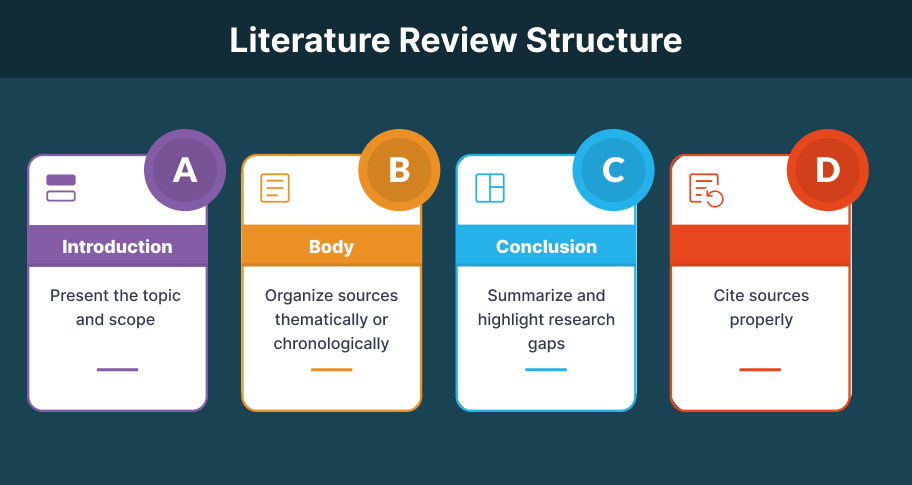
Writing a literature review can seem like a lot to take on. However, it is a very manageable process when you break it down into simple steps. Here’s our step-by-step guide on how to write a literature review.
Step 1: Select a Topic
The first step in writing a literature review is to choose a topic that is relevant and interesting to your research field. It should align with your research objectives. It should be specific and focused. Don’t make it too broad—but also don’t make it so narrow that you can’t find any research on it at all. You want there to be ample literature available to review. Your research will build on that.
Tip : Focus on a specific research question that your literature review will address. Try using field relevant keywords when you search ideas in literature databases.
Step 2: Search for Relevant Literature
Once your topic is chosen, conduct a thorough search for academic sources. Use databases like PubMed, JSTOR, or Google Scholar to find peer-reviewed articles, books, and conference papers.
- Use keywords related to your topic.
- Apply filters like publication date and research area.
- Search in libraries, academic journals, and trusted repositories.
Step 3: Evaluate and Analyze the Sources
Not all sources are created equal. Critically evaluate the quality and relevance of the literature. Consider the credibility of the author, the validity of the research methods, and the significance of the findings.
Criteria for Evaluation
- Author’s credentials and publication source
- Research design and methodology
- The study’s contribution to the field
Step 4: Organize the Literature
Organize your sources based on common themes, methodologies, findings, or the chronological development of ideas. A well-structured literature review outline can help. For example, you may categorize studies based on:
- Theoretical concepts
- Methodological approaches
- Historical progression
Organization Tips
- Use thematic or chronological order to maintain a coherent review.
- Identify major trends and seminal works in the field.
Step 5: Write the Literature Review
When writing, strive for a balanced discussion. Do not just summarize; synthesize and analyze. Critique the sources. Discuss the findings in a way that brings information in from multiple studies. Point out agreements, contradictions, and unanswered questions among the various sources.
Writing Tips
- Start each section with a strong topic sentence.
- Use clear and concise language.
- Maintain an objective tone, and do not inject personal opinions.
Literature Review Format
- Introduction: Present your research question and explain the purpose of the review.
- Body: Discuss studies in a structured manner.
- Conclusion: Summarize key findings and suggest future research directions.
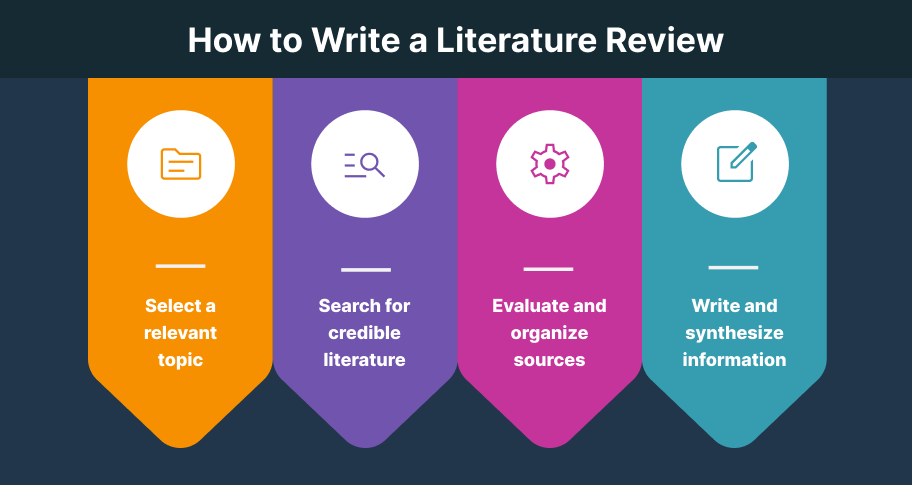
A literature review typically follows a standard structure.
Introduction
Introduce your topic and explain the review’s purpose. Clearly define the scope and outline the organization of the review.
The body is where you organize your sources. This can be done thematically (grouping similar studies together) or chronologically (presenting research in order of publication). Integrate studies by discussing their contributions and limitations.
Important Reminders
- Use transition words to maintain a logical flow.
- Highlight influential works and major shifts in the research.
Summarize the insights gained from your review. Highlight research gaps and suggest directions for future study. This section also emphasizes the significance of your research within the broader academic context.
The Impact of Social Media on Adolescent Mental Health
Here is our literature review example to show you how yours can look.
Social media usage among adolescents has sparked concern among mental health professionals (Uhls et al., 2017). Given that young people today are among the most active social media users, it is important to know how these platforms impact their psychological well-being. Adolescents are at a developmental stage where identity and role confusion represent the major conflict of their age according to Erikson’s psychosocial model. Social media platforms provide a space for this dramatic conflict to play out in ways that researchers are still trying to understand (Best et al., 2014).
Numerous studies have explored the relationship between social media engagement and various mental health outcomes (Maktelow & Taylor, 2014; Przybylski et al., 2013; Uhls et al., 2017). However, the findings are often mixed, and show both beneficial and harmful effects. This literature review focuses on the positive aspects of social media, such as peer support, the negative outcomes like heightened anxiety and depression, and the limitations inherent in the methodologies used by these studies.
Positive Impacts of Social Media: Peer Support and Connection
Research on the positive implications of social media for adolescent mental health indicates that these platforms have a lot to do with how social connections are established and the extent to which peer support is obtained (Best et al., 2014). Social media can promote a sense of belonging and provide adolescents with emotional support from their peers (Best et al., 2014). These online interactions can be beneficial for adolescents who experience social isolation or struggle with face-to-face interactions (Uhls et al., 2017). The ability to connect with peers who share similar experiences or interests can give a level of emotional affirmation that traditional offline interactions sometimes lack.
Uhls et al. (2017) described the importance of online communities in providing adolescents with opportunities for social engagement and self-expression, suggesting that these platforms allow teens to seek advice, share personal experiences, and receive encouragement, which can contribute positively to their self-esteem. Adolescents experiencing challenges such as bullying or family issues often turn to social media communities for support and validation, where they feel understood and less alone. In this way, the social connectivity afforded by platforms like Facebook, Instagram, and Snapchat can enhance adolescents’ overall well-being and promote resilience.

Negative Consequences of Social Media: Anxiety, Depression, and Self-Esteem Issues
Even though social media can offer emotional benefits, extensive evidence also points to its potential to harm adolescent mental health. One of the most frequently documented adverse outcomes is increased anxiety and depression linked to excessive social media use (Twenge & Campbell, 2018). Twenge and Campbell (2018) conducted a large-scale study that revealed a correlation between high levels of social media engagement and rising rates of depressive symptoms among teenagers. The researchers argued that the constant exposure to curated and often idealized representations of others’ lives led to feelings of inadequacy, poor self-image, and heightened anxiety. Adolescents may feel pressured to project a perfect image of themselves online, which can be exhausting and detrimental to their self-esteem.
Moreover, the concept of “fear of missing out” (FOMO) has emerged as a significant factor contributing to adolescent anxiety. FOMO refers to the pervasive apprehension that others are having rewarding experiences from which one is absent (Przybylski et al., 2013). Adolescents who experience FOMO are more likely to engage in compulsive social media checking, which disrupts their daily routines, sleep patterns, and academic performance (Przybylski et al., 2013). This behavior creates a cycle of anxiety and stress, as constant comparison and the need to remain connected exacerbate feelings of inadequacy.
Another area of concern is the impact of cyberbullying, which has become increasingly common with the advent of social media. Patchin and Hinduja (2015) found that victims of online harassment are more likely to experience severe psychological distress, like suicidal ideation and self-harm. Unlike traditional bullying, cyberbullying can occur at any time and is often anonymous, making it particularly relentless and damaging. The permanence of online interactions means that harmful content can be shared and viewed repeatedly, amplifying the psychological toll on victims. As a result, the mental health repercussions of cyberbullying can be profound and long-lasting.
Methodological Limitations in Existing Research
Despite the wealth of research on the relationship between social media and adolescent mental health, several methodological limitations complicate the interpretation of findings. One significant challenge is the reliance on self-reported data, which can be subject to bias. Adolescents may not accurately recall or may choose to underreport the extent of their social media use or the severity of their psychological symptoms (Keles et al., 2020). Reliance on self-reported measures makes it difficult to establish causal relationships between social media use and mental health outcomes.
Furthermore, many studies use cross-sectional designs, which cannot determine the directionality of the relationship between social media use and mental health (Patchin & Hinduja, 2015). It remains unclear whether increased social media use leads to poorer mental health or if adolescents struggling with mental health issues are more likely to seek out social media as a coping mechanism. Longitudinal research is needed to better understand the temporal dynamics of this relationship. The heterogeneity of social media platforms also complicates research, as different platforms may have unique features that affect users differently.. For example, visual platforms like Instagram may have a different psychological impact than text-based platforms like Twitter, and few if any studies have accounted for these nuances.
Another limitation involves the cultural context of social media use. Much of the research is conducted in Western countries, primarily the United States and Europe, which may not fully capture the full experience of adolescent social media engagement. Cultural differences in social norms, values, and access to technology can influence how adolescents use social media and how it affects their well-being. Thus, a culturally diverse research approach may be necessary to draw the most applicable conclusions.
The impact of social media on adolescent mental health has positive and negative dimensions. Social media platforms offer adolescents opportunities to seek peer support and partake of social engagement. At the same time there is the risk of excessive use and negative experiences, such as cyberbullying and FOMO, which are linked to increased anxiety, depression, and self-esteem issues. Existing research reveals methodological limitations such as self-reported data, cross-sectional designs, and a lack of cultural diversity in studies. Future research should focus on longitudinal studies and culturally sensitive approaches for a fuller understanding of how social media influences adolescent mental health. Moreover, intervention strategies that teach adolescents healthy social media habits and provide resources for coping with online stressors may be needed.
Best, P., Manktelow, R., & Taylor, B. (2014). Online communication, social media and adolescent wellbeing: A systematic narrative review. Children and Youth Services Review , 41, 27-36.
Keles, B., McCrae, N., & Grealish, A. (2020). A systematic review: The influence of social media on depression, anxiety, and psychological distress in adolescents. International Journal of Adolescence and Youth , 25(1), 79-93.
Patchin, J. W., & Hinduja, S. (2015). Measuring cyberbullying: Implications for research. Aggression and Violent Behavior , 23, 69-74.
Przybylski, A. K., Murayama, K., DeHaan, C. R., & Gladwell, V. (2013). Motivational, emotional, and behavioral correlates of fear of missing out. Computers in Human Behavior , 29(4), 1841-1848.
Twenge, J. M., & Campbell, W. K. (2018). Associations between screen time and lower psychological well-being among children and adolescents: Evidence from a population-based study. Preventive Medicine Reports , 12, 271-283.
Uhls, Y. T., Ellison, N. B., & Subrahmanyam, K. (2017). Benefits and costs of social media in adolescence. Pediatrics , 140(Supplement 2), S67-S70.
When writing in APA style, an APA literature review must follow specific guidelines for citation and formatting.
APA Formatting Guidelines
- Title Page : Include the title, author’s name, and institutional affiliation.
- Abstract : A brief summary of your review (usually 150-250 words).
- In-text Citations : Use the author-date citation method (e.g., Smith, 2020).
- Reference List : Provide full citations for all referenced works in alphabetical order.
Tips : Always adhere to the latest APA manual for formatting rules.
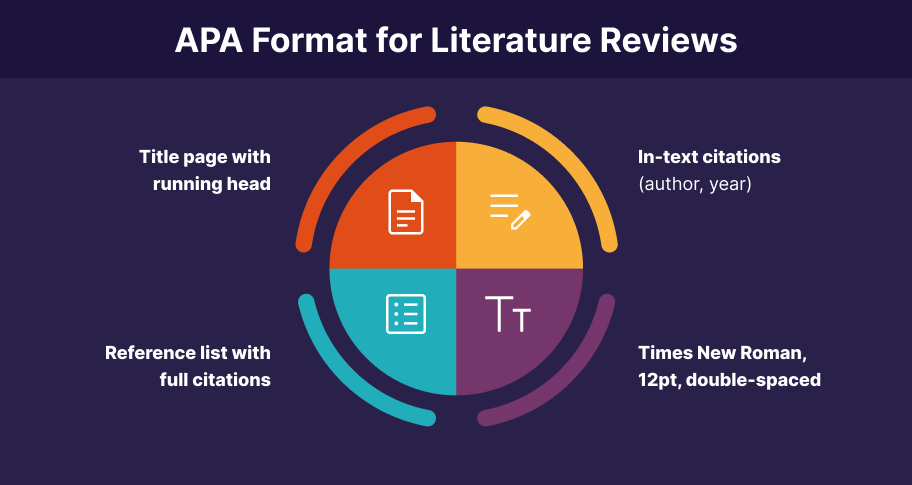
A literature review template can simplify the process of organizing your review. You can find templates for APA, MLA, or Harvard formats at Purdue OWL . These templates provide a ready-to-use framework, so that your review is well-structured.
Common Mistakes to Avoid When Writing a Literature Review
Even experienced researchers can fall into common pitfalls. Here’s what to avoid:
- Lack of Focus : Make sure your review addresses a clear research question.
- Poor Organization : Avoid a scattered presentation. Use an outline to maintain structure.
- Failure to Synthesize : Do not just list sources. Instead, integrate and compare studies to show meaningful conclusions.
- Outdated Sources : Always use recent and relevant research unless discussing foundational theories.
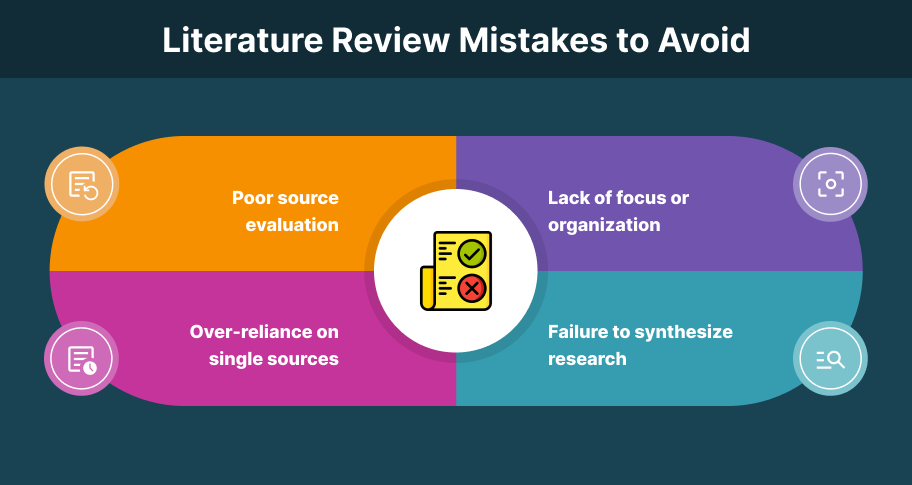
How long should a literature review be?
The length depends on the purpose and scope of your study. A literature review for a dissertation is typically longer than one for a research paper.
Can I include non-academic sources in a literature review?
Generally, it’s best to prioritize peer-reviewed and scholarly sources. However, in some cases, reputable non-academic sources may be used to provide additional context.
How do I structure a literature review for a dissertation?
Follow a detailed outline that includes an introduction, a well-organized body (thematic or chronological), and a concise conclusion. Discuss theories, methodologies, and identify research gaps.
Writing a literature review may seem like a tremendous challenge, but don’t give up! Use our tips and idea, maintain focus, and take it step by step. You’ll find that with a structured approach, even an inexperienced researcher can quickly gain a feel for how to write a literature review! Remember, a well-organized review can help you identify gaps that your own research can fill. Don’t skip on your lit review—dive in and use it to make your research thesis or dissertation even better.
Still need assistance with your literature review? View or download our free literature review worksheet to help get you started.
Take the first step to becoming a better academic writer.
Writing tools.
- How to write a research proposal 2021 guide
- Guide to citing in MLA
- Guide to citing in APA format
- Chicago style citation guide
- Harvard referencing and citing guide
- How to complete an informative essay outline
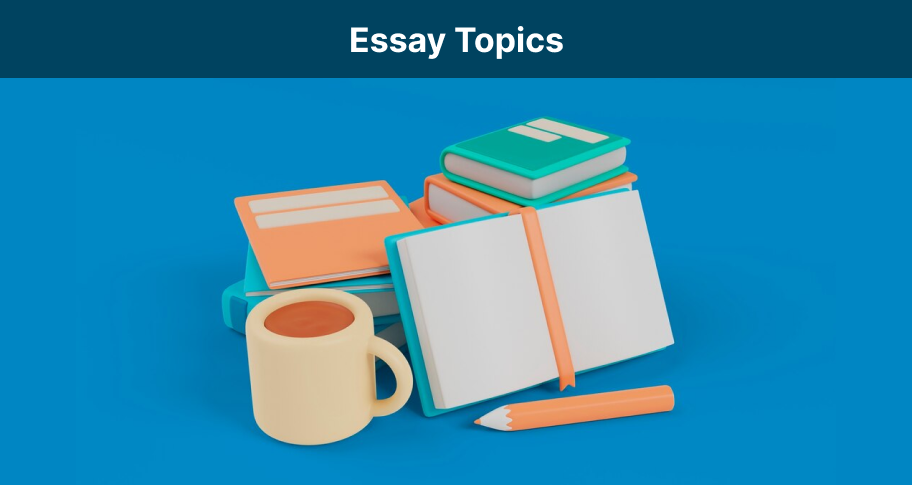
How to Choose the Best Essay Topics
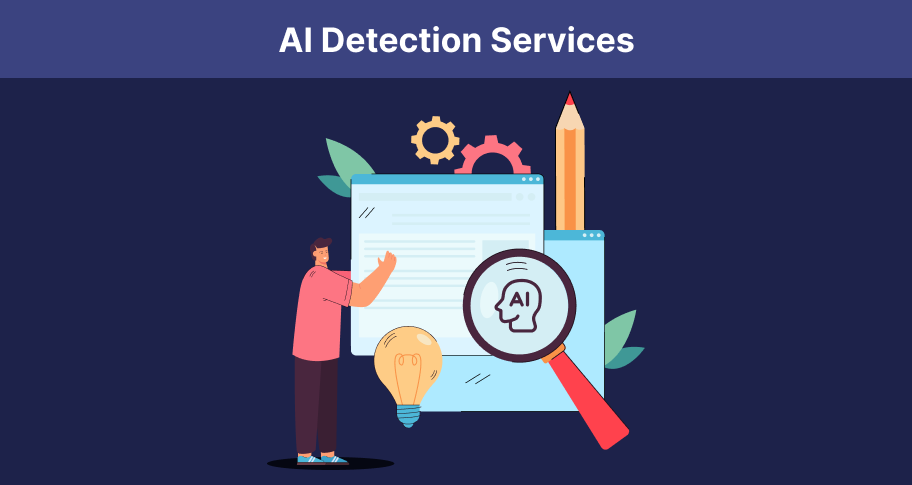
AI Text Detection Services

Unlock Your Writing Potential with Our AI Essay Writing Assistant

The Negative Impacts of Artificial Intelligence on Tactile Learning
Reference management. Clean and simple.

How to write a literature review in 6 steps
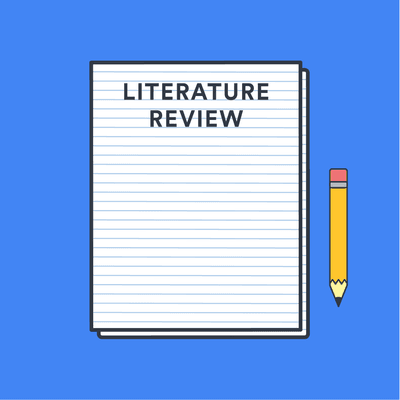
What is a literature review?
How to write a literature review, 1. determine the purpose of your literature review, 2. do an extensive search, 3. evaluate and select literature, 4. analyze the literature, 5. plan the structure of your literature review, 6. write your literature review, other resources to help you write a successful literature review, frequently asked questions about writing a literature review, related articles.
A literature review is an assessment of the sources in a chosen topic of research.
A good literature review does not just summarize sources. It analyzes the state of the field on a given topic and creates a scholarly foundation for you to make your own intervention. It demonstrates to your readers how your research fits within a larger field of study.
In a thesis, a literature review is part of the introduction, but it can also be a separate section. In research papers, a literature review may have its own section or it may be integrated into the introduction, depending on the field.
➡️ Our guide on what is a literature review covers additional basics about literature reviews.
- Identify the main purpose of the literature review.
- Do extensive research.
- Evaluate and select relevant sources.
- Analyze the sources.
- Plan a structure.
- Write the review.
In this section, we review each step of the process of creating a literature review.
In the first step, make sure you know specifically what the assignment is and what form your literature review should take. Read your assignment carefully and seek clarification from your professor or instructor if needed. You should be able to answer the following questions:
- How many sources do I need to include?
- What types of sources should I review?
- Should I evaluate the sources?
- Should I summarize, synthesize or critique sources?
- Do I need to provide any definitions or background information?
In addition to that, be aware that the narrower your topic, the easier it will be to limit the number of sources you need to read in order to get a good overview of the topic.
Now you need to find out what has been written on the topic and search for literature related to your research topic. Make sure to select appropriate source material, which means using academic or scholarly sources , including books, reports, journal articles , government documents and web resources.
➡️ If you’re unsure about how to tell if a source is scholarly, take a look at our guide on how to identify a scholarly source .
Come up with a list of relevant keywords and then start your search with your institution's library catalog, and extend it to other useful databases and academic search engines like:
- Google Scholar
- Science.gov
➡️ Our guide on how to collect data for your thesis might be helpful at this stage of your research as well as the top list of academic search engines .
Once you find a useful article, check out the reference list. It should provide you with even more relevant sources. Also, keep a note of the:
- authors' names
- page numbers
Keeping track of the bibliographic information for each source will save you time when you’re ready to create citations. You could also use a reference manager like Paperpile to automatically save, manage, and cite your references.
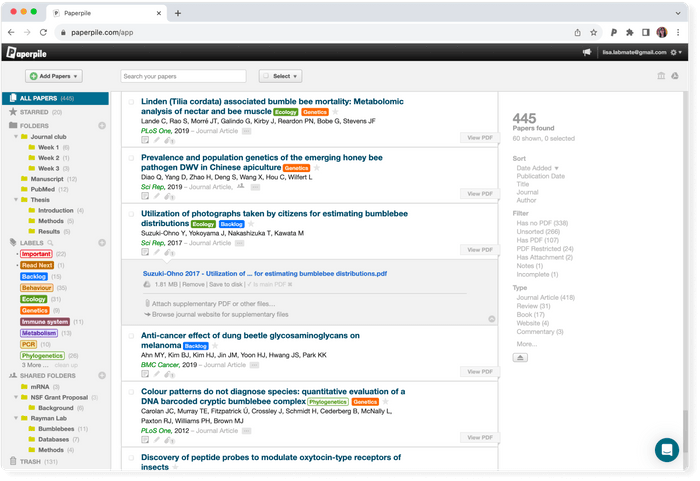
Read the literature. You will most likely not be able to read absolutely everything that is out there on the topic. Therefore, read the abstract first to determine whether the rest of the source is worth your time. If the source is relevant for your topic:
- Read it critically.
- Look for the main arguments.
- Take notes as you read.
- Organize your notes using a table, mind map, or other technique.
Now you are ready to analyze the literature you have gathered. While your are working on your analysis, you should ask the following questions:
- What are the key terms, concepts and problems addressed by the author?
- How is this source relevant for my specific topic?
- How is the article structured? What are the major trends and findings?
- What are the conclusions of the study?
- How are the results presented? Is the source credible?
- When comparing different sources, how do they relate to each other? What are the similarities, what are the differences?
- Does the study help me understand the topic better?
- Are there any gaps in the research that need to be filled? How can I further my research as a result of the review?
Tip: Decide on the structure of your literature review before you start writing.
There are various ways to organize your literature review:
- Chronological method : Writing in the chronological method means you are presenting the materials according to when they were published. Follow this approach only if a clear path of research can be identified.
- Thematic review : A thematic review of literature is organized around a topic or issue, rather than the progression of time.
- Publication-based : You can order your sources by publication, if the way you present the order of your sources demonstrates a more important trend. This is the case when a progression revealed from study to study and the practices of researchers have changed and adapted due to the new revelations.
- Methodological approach : A methodological approach focuses on the methods used by the researcher. If you have used sources from different disciplines that use a variety of research methods, you might want to compare the results in light of the different methods and discuss how the topic has been approached from different sides.
Regardless of the structure you chose, a review should always include the following three sections:
- An introduction, which should give the reader an outline of why you are writing the review and explain the relevance of the topic.
- A body, which divides your literature review into different sections. Write in well-structured paragraphs, use transitions and topic sentences and critically analyze each source for how it contributes to the themes you are researching.
- A conclusion , which summarizes the key findings, the main agreements and disagreements in the literature, your overall perspective, and any gaps or areas for further research.
➡️ If your literature review is part of a longer paper, visit our guide on what is a research paper for additional tips.
➡️ UNC writing center: Literature reviews
➡️ How to write a literature review in 3 steps
➡️ How to write a literature review in 30 minutes or less
The goal of a literature review is to asses the state of the field on a given topic in preparation for making an intervention.
A literature review should have its own independent section. You should indicate clearly in the table of contents where it can be found, and address this section as “Literature Review.”
There is no set amount of words for a literature review; the length depends on the research. If you are working with a large amount of sources, then it will be long. If your paper does not depend entirely on references, then it will be short.
Most research papers include a literature review. By assessing the available sources in your field of research, you will be able to make a more confident argument about the topic.
Literature reviews are most commonly found in theses and dissertations. However, you find them in research papers as well.
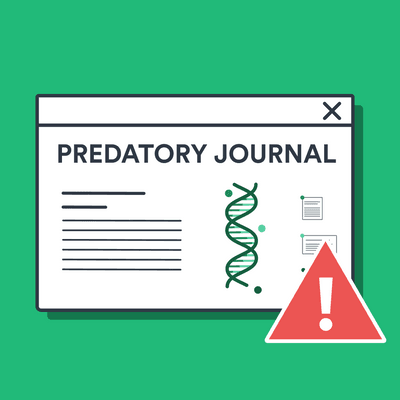

🚀 Work With Us
Private Coaching
Language Editing
Qualitative Coding
✨ Free Resources
Templates & Tools
Short Courses
Articles & Videos
How To Write A Literature Review
A Plain-Language Tutorial (With Examples) + Free Template
By: Derek Jansen (MBA) | Expert Reviewed By: Dr. Eunice Rautenbach | October 2019

Q uality research is about building onto the existing work of others , “standing on the shoulders of giants”, as Newton put it. The literature review chapter of your dissertation, thesis or research project is where you synthesise this prior work and lay the theoretical foundation for your own research.
Long story short, this chapter is a pretty big deal, which is why you want to make sure you get it right . In this post, I’ll show you exactly how to write a literature review in three straightforward steps, so you can conquer this vital chapter (the smart way).
Overview: The Literature Review Process
- Understanding the “ why “
- Finding the relevant literature
- Cataloguing and synthesising the information
- Outlining & writing up your literature review
- Example of a literature review
But first, the “why”…
Before we unpack how to write the literature review chapter, we’ve got to look at the why . To put it bluntly, if you don’t understand the function and purpose of the literature review process, there’s no way you can pull it off well. So, what exactly is the purpose of the literature review?
Well, there are (at least) four core functions:
- For you to gain an understanding (and demonstrate this understanding) of where the research is at currently, what the key arguments and disagreements are.
- For you to identify the gap(s) in the literature and then use this as justification for your own research topic.
- To help you build a conceptual framework for empirical testing (if applicable to your research topic).
- To inform your methodological choices and help you source tried and tested questionnaires (for interviews ) and measurement instruments (for surveys ).
Most students understand the first point but don’t give any thought to the rest. To get the most from the literature review process, you must keep all four points front of mind as you review the literature (more on this shortly), or you’ll land up with a wonky foundation.
Okay – with the why out the way, let’s move on to the how . As mentioned above, writing your literature review is a process, which I’ll break down into three steps:
- Finding the most suitable literature
- Understanding , distilling and organising the literature
- Planning and writing up your literature review chapter
Importantly, you must complete steps one and two before you start writing up your chapter. I know it’s very tempting, but don’t try to kill two birds with one stone and write as you read. You’ll invariably end up wasting huge amounts of time re-writing and re-shaping, or you’ll just land up with a disjointed, hard-to-digest mess . Instead, you need to read first and distil the information, then plan and execute the writing.
⚡ GET THE FREE TEMPLATE ⚡
Fast-track your research with our award-winning Lit Review Template .
Download Now 📂
Step 1: Find the relevant literature
Naturally, the first step in the literature review journey is to hunt down the existing research that’s relevant to your topic. While you probably already have a decent base of this from your research proposal , you need to expand on this substantially in the dissertation or thesis itself.
Essentially, you need to be looking for any existing literature that potentially helps you answer your research question (or develop it, if that’s not yet pinned down). There are numerous ways to find relevant literature, but I’ll cover my top four tactics here. I’d suggest combining all four methods to ensure that nothing slips past you:
Method 1 – Google Scholar Scrubbing
Google’s academic search engine, Google Scholar , is a great starting point as it provides a good high-level view of the relevant journal articles for whatever keyword you throw at it. Most valuably, it tells you how many times each article has been cited, which gives you an idea of how credible (or at least, popular) it is. Some articles will be free to access, while others will require an account, which brings us to the next method.
Method 2 – University Database Scrounging
Generally, universities provide students with access to an online library, which provides access to many (but not all) of the major journals.
So, if you find an article using Google Scholar that requires paid access (which is quite likely), search for that article in your university’s database – if it’s listed there, you’ll have access. Note that, generally, the search engine capabilities of these databases are poor, so make sure you search for the exact article name, or you might not find it.
Method 3 – Journal Article Snowballing
At the end of every academic journal article, you’ll find a list of references. As with any academic writing, these references are the building blocks of the article, so if the article is relevant to your topic, there’s a good chance a portion of the referenced works will be too. Do a quick scan of the titles and see what seems relevant, then search for the relevant ones in your university’s database.
Method 4 – Dissertation Scavenging
Similar to Method 3 above, you can leverage other students’ dissertations. All you have to do is skim through literature review chapters of existing dissertations related to your topic and you’ll find a gold mine of potential literature. Usually, your university will provide you with access to previous students’ dissertations, but you can also find a much larger selection in the following databases:
- Open Access Theses & Dissertations
- Stanford SearchWorks
Keep in mind that dissertations and theses are not as academically sound as published, peer-reviewed journal articles (because they’re written by students, not professionals), so be sure to check the credibility of any sources you find using this method. You can do this by assessing the citation count of any given article in Google Scholar. If you need help with assessing the credibility of any article, or with finding relevant research in general, you can chat with one of our Research Specialists .
Alright – with a good base of literature firmly under your belt, it’s time to move onto the next step.
Need a helping hand?
Step 2: Log, catalogue and synthesise
Once you’ve built a little treasure trove of articles, it’s time to get reading and start digesting the information – what does it all mean?
While I present steps one and two (hunting and digesting) as sequential, in reality, it’s more of a back-and-forth tango – you’ll read a little , then have an idea, spot a new citation, or a new potential variable, and then go back to searching for articles. This is perfectly natural – through the reading process, your thoughts will develop , new avenues might crop up, and directional adjustments might arise. This is, after all, one of the main purposes of the literature review process (i.e. to familiarise yourself with the current state of research in your field).
As you’re working through your treasure chest, it’s essential that you simultaneously start organising the information. There are three aspects to this:
- Logging reference information
- Building an organised catalogue
- Distilling and synthesising the information
I’ll discuss each of these below:
2.1 – Log the reference information
As you read each article, you should add it to your reference management software. I usually recommend Mendeley for this purpose (see the Mendeley 101 video below), but you can use whichever software you’re comfortable with. Most importantly, make sure you load EVERY article you read into your reference manager, even if it doesn’t seem very relevant at the time.
2.2 – Build an organised catalogue
In the beginning, you might feel confident that you can remember who said what, where, and what their main arguments were. Trust me, you won’t. If you do a thorough review of the relevant literature (as you must!), you’re going to read many, many articles, and it’s simply impossible to remember who said what, when, and in what context . Also, without the bird’s eye view that a catalogue provides, you’ll miss connections between various articles, and have no view of how the research developed over time. Simply put, it’s essential to build your own catalogue of the literature.
I would suggest using Excel to build your catalogue, as it allows you to run filters, colour code and sort – all very useful when your list grows large (which it will). How you lay your spreadsheet out is up to you, but I’d suggest you have the following columns (at minimum):
- Author, date, title – Start with three columns containing this core information. This will make it easy for you to search for titles with certain words, order research by date, or group by author.
- Categories or keywords – You can either create multiple columns, one for each category/theme and then tick the relevant categories, or you can have one column with keywords.
- Key arguments/points – Use this column to succinctly convey the essence of the article, the key arguments and implications thereof for your research.
- Context – Note the socioeconomic context in which the research was undertaken. For example, US-based, respondents aged 25-35, lower- income, etc. This will be useful for making an argument about gaps in the research.
- Methodology – Note which methodology was used and why. Also, note any issues you feel arise due to the methodology. Again, you can use this to make an argument about gaps in the research.
- Quotations – Note down any quoteworthy lines you feel might be useful later.
- Notes – Make notes about anything not already covered. For example, linkages to or disagreements with other theories, questions raised but unanswered, shortcomings or limitations, and so forth.
If you’d like, you can try out our free catalog template here (see screenshot below).
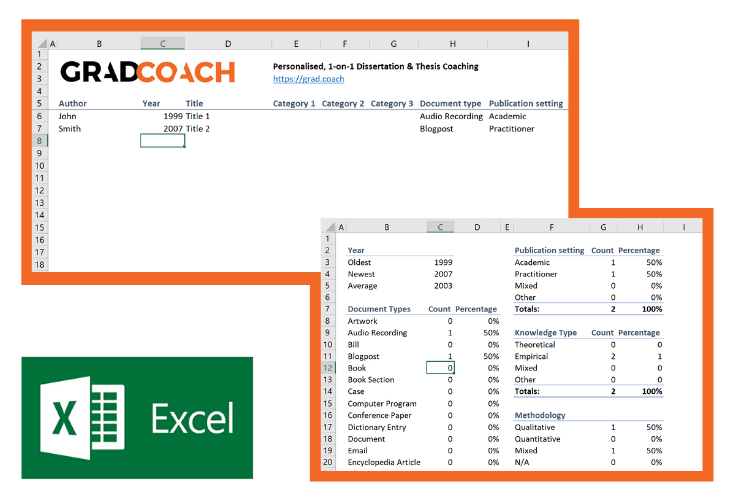
2.3 – Digest and synthesise
Most importantly, as you work through the literature and build your catalogue, you need to synthesise all the information in your own mind – how does it all fit together? Look for links between the various articles and try to develop a bigger picture view of the state of the research. Some important questions to ask yourself are:
- What answers does the existing research provide to my own research questions ?
- Which points do the researchers agree (and disagree) on?
- How has the research developed over time?
- Where do the gaps in the current research lie?
To help you develop a big-picture view and synthesise all the information, you might find mind mapping software such as Freemind useful. Alternatively, if you’re a fan of physical note-taking, investing in a large whiteboard might work for you.

Step 3: Outline and write it up!
Once you’re satisfied that you have digested and distilled all the relevant literature in your mind, it’s time to put pen to paper (or rather, fingers to keyboard). There are two steps here – outlining and writing:
3.1 – Draw up your outline
Having spent so much time reading, it might be tempting to just start writing up without a clear structure in mind. However, it’s critically important to decide on your structure and develop a detailed outline before you write anything. Your literature review chapter needs to present a clear, logical and an easy to follow narrative – and that requires some planning. Don’t try to wing it!
Naturally, you won’t always follow the plan to the letter, but without a detailed outline, you’re more than likely going to end up with a disjointed pile of waffle , and then you’re going to spend a far greater amount of time re-writing, hacking and patching. The adage, “measure twice, cut once” is very suitable here.
In terms of structure, the first decision you’ll have to make is whether you’ll lay out your review thematically (into themes) or chronologically (by date/period). The right choice depends on your topic, research objectives and research questions, which we discuss in this article .
Once that’s decided, you need to draw up an outline of your entire chapter in bullet point format. Try to get as detailed as possible, so that you know exactly what you’ll cover where, how each section will connect to the next, and how your entire argument will develop throughout the chapter. Also, at this stage, it’s a good idea to allocate rough word count limits for each section, so that you can identify word count problems before you’ve spent weeks or months writing!
PS – check out our free literature review chapter template…
3.2 – Get writing
With a detailed outline at your side, it’s time to start writing up (finally!). At this stage, it’s common to feel a bit of writer’s block and find yourself procrastinating under the pressure of finally having to put something on paper. To help with this, remember that the objective of the first draft is not perfection – it’s simply to get your thoughts out of your head and onto paper, after which you can refine them. The structure might change a little, the word count allocations might shift and shuffle, and you might add or remove a section – that’s all okay. Don’t worry about all this on your first draft – just get your thoughts down on paper.
⚡ THE #1 LITERATURE REVIEW CHECKLIST ⚡
Give your markers EXACTLY what they want with our FREE checklist.
Download For Free 📄
Once you’ve got a full first draft (however rough it may be), step away from it for a day or two (longer if you can) and then come back at it with fresh eyes. Pay particular attention to the flow and narrative – does it fall fit together and flow from one section to another smoothly? Now’s the time to try to improve the linkage from each section to the next, tighten up the writing to be more concise, trim down word count and sand it down into a more digestible read.
Once you’ve done that, give your writing to a friend or colleague who is not a subject matter expert and ask them if they understand the overall discussion. The best way to assess this is to ask them to explain the chapter back to you. This technique will give you a strong indication of which points were clearly communicated and which weren’t. If you’re working with Grad Coach, this is a good time to have your Research Specialist review your chapter.
Finally, tighten it up and send it off to your supervisor for comment. Some might argue that you should be sending your work to your supervisor sooner than this (indeed your university might formally require this), but in my experience, supervisors are extremely short on time (and often patience), so, the more refined your chapter is, the less time they’ll waste on addressing basic issues (which you know about already) and the more time they’ll spend on valuable feedback that will increase your mark-earning potential.
Literature Review Example
In the video below, we unpack an actual literature review so that you can see how all the core components come together in reality.
Let’s Recap
In this post, we’ve covered how to research and write up a high-quality literature review chapter. Let’s do a quick recap of the key takeaways:
- It is essential to understand the WHY of the literature review before you read or write anything. Make sure you understand the 4 core functions of the process.
- The first step is to hunt down the relevant literature . You can do this using Google Scholar, your university database, the snowballing technique and by reviewing other dissertations and theses.
- Next, you need to log all the articles in your reference manager , build your own catalogue of literature and synthesise all the research.
- Following that, you need to develop a detailed outline of your entire chapter – the more detail the better. Don’t start writing without a clear outline (on paper, not in your head!)
- Write up your first draft in rough form – don’t aim for perfection. Remember, done beats perfect.
- Refine your second draft and get a layman’s perspective on it . Then tighten it up and submit it to your supervisor.

Learn More About The Lit Review:

How To Choose A Tutor For Your Dissertation
Hiring the right tutor for your dissertation or thesis can make the difference between passing and failing. Here’s what you need to consider.

5 Signs You Need A Dissertation Helper
Discover the 5 signs that suggest you need a dissertation helper to get unstuck, finish your degree and get your life back.

Writing A Literature Review: 4 Time-Saving Hacks
🎙️ PODCAST: Ace The Literature Review 4 Time-Saving Tips To Fast-Track Your Literature...

Research Question 101: Everything You Need To Know
Learn what a research question is, how it’s different from a research aim or objective, and how to write a high-quality research question.
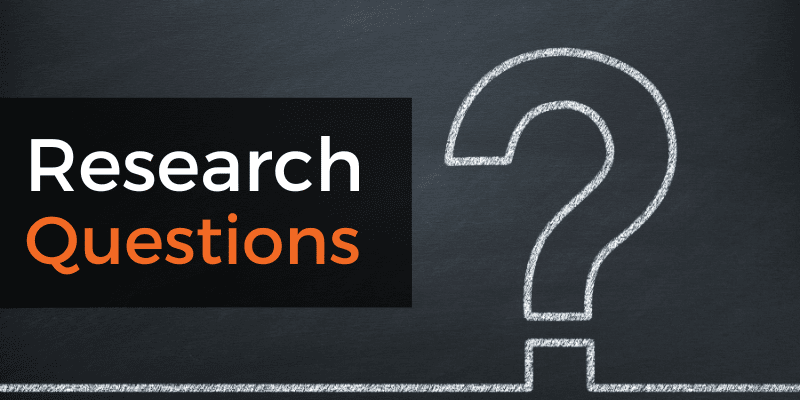
Research Question Examples: The Perfect Starting Point
See what quality research questions look like across multiple topic areas, including psychology, business, computer science and more.
📄 FREE TEMPLATES
Research Topic Ideation
Proposal Writing
Literature Review
Methodology & Analysis
Academic Writing
Referencing & Citing
Apps, Tools & Tricks
The Grad Coach Podcast
38 Comments
Thank you very much. This page is an eye opener and easy to comprehend.
This is awesome!
I wish I come across GradCoach earlier enough.
But all the same I’ll make use of this opportunity to the fullest.
Thank you for this good job.
Keep it up!
You’re welcome, Yinka. Thank you for the kind words. All the best writing your literature review.
Thank you for a very useful literature review session. Although I am doing most of the steps…it being my first masters an Mphil is a self study and one not sure you are on the right track. I have an amazing supervisor but one also knows they are super busy. So not wanting to bother on the minutae. Thank you.
You’re most welcome, Renee. Good luck with your literature review 🙂
This has been really helpful. Will make full use of it. 🙂
Thank you Gradcoach.
Really agreed. Admirable effort
thank you for this beautiful well explained recap.
Thank you so much for your guide of video and other instructions for the dissertation writing.
It is instrumental. It encouraged me to write a dissertation now.
Thank you the video was great – from someone that knows nothing thankyou
an amazing and very constructive way of presetting a topic, very useful, thanks for the effort,
It is timely
It is very good video of guidance for writing a research proposal and a dissertation. Since I have been watching and reading instructions, I have started my research proposal to write. I appreciate to Mr Jansen hugely.
I learn a lot from your videos. Very comprehensive and detailed.
Thank you for sharing your knowledge. As a research student, you learn better with your learning tips in research
I was really stuck in reading and gathering information but after watching these things are cleared thanks, it is so helpful.
Really helpful, Thank you for the effort in showing such information
This is super helpful thank you very much.
Thank you for this whole literature writing review.You have simplified the process.
I’m so glad I found GradCoach. Excellent information, Clear explanation, and Easy to follow, Many thanks Derek!
You’re welcome, Maithe. Good luck writing your literature review 🙂
Thank you Coach, you have greatly enriched and improved my knowledge
Great piece, so enriching and it is going to help me a great lot in my project and thesis, thanks so much
This is THE BEST site for ANYONE doing a masters or doctorate! Thank you for the sound advice and templates. You rock!
Thanks, Stephanie 🙂
This is mind blowing, the detailed explanation and simplicity is perfect.
I am doing two papers on my final year thesis, and I must stay I feel very confident to face both headlong after reading this article.
thank you so much.
if anyone is to get a paper done on time and in the best way possible, GRADCOACH is certainly the go to area!
This is very good video which is well explained with detailed explanation
Thank you excellent piece of work and great mentoring
Thanks, it was useful
Thank you very much. the video and the information were very helpful.
Good morning scholar. I’m delighted coming to know you even before the commencement of my dissertation which hopefully is expected in not more than six months from now. I would love to engage my study under your guidance from the beginning to the end. I love to know how to do good job
Thank you so much Derek for such useful information on writing up a good literature review. I am at a stage where I need to start writing my one. My proposal was accepted late last year but I honestly did not know where to start
Like the name of your YouTube implies you are GRAD (great,resource person, about dissertation). In short you are smart enough in coaching research work.
This is a very well thought out webpage. Very informative and a great read.
Very timely.
I appreciate.
Very comprehensive and eye opener for me as beginner in postgraduate study. Well explained and easy to understand. Appreciate and good reference in guiding me in my research journey. Thank you
Thank you. I requested to download the free literature review template, however, your website wouldn’t allow me to complete the request or complete a download. May I request that you email me the free template? Thank you.
Submit a Comment Cancel reply
Your email address will not be published. Required fields are marked *
Save my name, email, and website in this browser for the next time I comment.
Submit Comment
- Print Friendly

IMAGES
COMMENTS
Jan 2, 2023 · There are five key steps to writing a literature review: Search for relevant literature; Evaluate sources; Identify themes, debates, and gaps; Outline the structure; Write your literature review
Where, when, and why would I write a lit review? There are a number of different situations where you might write a literature review, each with slightly different expectations; different disciplines, too, have field-specific expectations for what a literature review is and does.
Learn how to write a literature review with this comprehensive guide. Discover tips on organizing, formatting, and avoiding common mistakes, along with an APA literature review example and template. Perfect for students and researchers.
This step-by-step guide on how to write an excellent literature review covers all aspects of planning and writing literature reviews for academic papers and theses. Reference management. Clean and simple.
Oct 1, 2019 · Learn how to write a literature review in three straightforward steps. Includes free literature review templates and resources.
This handout will focus on defining what a literature review is, how to organize and synthesize information, and what the different parts of a literature review are. The Purpose of a Literature Review. A literature review demonstrates your ability to research; it also showcases your expertise on your chosen topic.